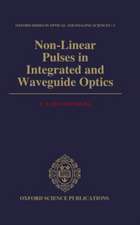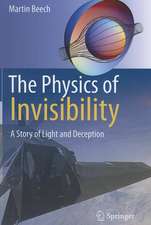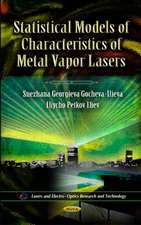Geometrical Optics: Applied Physics and Engineering, cartea 9
Autor H.G. Zimmer Traducere de R.N. Wilsonen Limba Engleză Paperback – 20 iun 2012
Preț: 381.21 lei
Nou
Puncte Express: 572
Preț estimativ în valută:
72.95€ • 78.00$ • 60.82£
72.95€ • 78.00$ • 60.82£
Carte tipărită la comandă
Livrare economică 18 aprilie-02 mai
Preluare comenzi: 021 569.72.76
Specificații
ISBN-13: 9783642868337
ISBN-10: 3642868339
Pagini: 184
Ilustrații: VIII, 172 p.
Dimensiuni: 152 x 229 x 10 mm
Greutate: 0.25 kg
Ediția:Softcover reprint of the original 1st ed. 1970
Editura: Springer Berlin, Heidelberg
Colecția Springer
Seria Applied Physics and Engineering
Locul publicării:Berlin, Heidelberg, Germany
ISBN-10: 3642868339
Pagini: 184
Ilustrații: VIII, 172 p.
Dimensiuni: 152 x 229 x 10 mm
Greutate: 0.25 kg
Ediția:Softcover reprint of the original 1st ed. 1970
Editura: Springer Berlin, Heidelberg
Colecția Springer
Seria Applied Physics and Engineering
Locul publicării:Berlin, Heidelberg, Germany
Public țintă
ResearchCuprins
1: Perfect Imagery.- § 1 Light, Radiation and Geometrical Optics.- § 2 Light Tubes.- § 3 Linear Conductivity.- § 4 Diffraction.- § 5 The Rayleigh Unit.- § 6 Definition of Perfect Imagery.- § 7 The Fundamental Processes of Perfect Imagery.- § 8 Relationships between the Fundamental Processes.- § 9 Summary of all the Processes of Perfect Imagery.- § 10 The Eye.- § 11 Spectacles and Magnifying Glasses.- § 12 The Telescope and the Microscope.- § 13 The Photographic Emulsion.- § 14 The Photographic Objective.- § 15 The Calculation of Light Tubes.- § 16 The Gaussian Brackets.- § 17 Graphical Representation of Perfect Imagery.- § 18 Conductivity Diagrams of Optical Instruments.- § 19 Imagery in Depth.- § 20 Summary of Part 1.- 2: Theory of Aberrations.- § 21 Aberrations and Geometrical Optics.- § 22 Optical Glasses.- § 23 The Chromatic Aberrations of Perfect Imagery.- § 24 Analysis of the Primary Chromatic Aberrations.- § 25 Secondary Spectrum.- § 26 Plane Rays.- §27 The Primary Monochromatic Aberrations of Plane Rays.- § 28 Analysis of the Aberrations of Plane Rays.- § 29 The Secondary Aberrations of Plane Rays.- § 30 Skew Rays.- § 31 Astigmatism.- § 32 Analysis of Astigmatism.- § 33 Coma.- §34 The Influence of Object and Pupil Positions on Aberrations.- Conclusion and References to Literature.



























